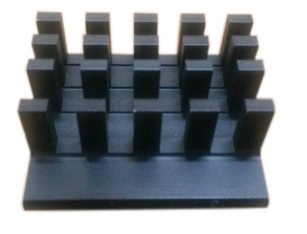The development of refrigerated trucks has promoted the modernization of food and medicine and increased circulation and penetration. The desire of northern people to taste southern litchi and hairy crabs is no longer a luxury; the idea of ​​southern residents wanting to drink fresh milk in the north also became a reality. “It would be a laughing and weeping laugh, no one would know that it is litchiâ€. Reappear.
So, what kind of miraculous effect can refrigeration cars keep fresh products fresh for a long time? We will come together to explore the manufacturing process of refrigerated trucks.
Refrigerated car and warm car
In many people's minds, the concepts of refrigerated trucks and warm-keeping trucks are almost the same, and they all achieve the purpose of keeping fresh. In fact, there are commonalities between the two models, but there are more essential differences.
In terms of heat preservation, the refrigerated truck is equipped with a refrigeration unit, and the temperature can reach 10-18°C, which not only maintains the temperature of the cargo itself, but also keeps the frozen cargo free from external temperature and humidity. The temperature of a warming car can only be maintained at minus 3-4°C. It can only maintain the temperature of the goods themselves, and the longer the transport distance, the greater the temperature difference. The refrigerated truck is suitable for long-distance transportation of goods and has long-lasting refrigerating capacity, while the refrigerated truck is only suitable for short-distance domestic transportation of less goods.
The history of the development of refrigerated trucks
The world's earliest refrigerated truck was invented by the Soviet Union in the 1960s. Although the United States also appeared in the same period, it was a few years later. Early Soviet refrigerated trucks can be roughly divided into three types. The first type is a wooden box, the second type is a metal frame with a wooden hoarding, and the third type is a full metal. The refrigeration method is also very different. Some are equipped with end wall type coolers, there are ceiling type coolers, and there are also refrigerators for the engineers Kleinyonov salt water self-circulation device.
The type of ice-cage with end wall type ice cages used in the wooden cabin refrigerated trucks before 1937 belonged to this category. Such refrigerated bodies consist of wooden frames and wooden hoardings. The stability and firmness of the car body are poor. The body and chassis often appear to move.
Metal-frame wood panel refrigerated trucks, which are the second type of refrigerated trucks that use end-wall coolers, are structurally more refrigerated than wooden carts. This type of refrigeration was put into production at the Bleus locomotive manufacturing plant in 1937. However, due to limitations in the volume of the compartments, they were not soon replaced by the market.
The all-metal refrigerated truck developed the technical mission of the Soviet Railway Transport Research Institute in 1946. One factory designed a refrigerated truck with all-metal structure according to technical missions, and since 1948 has started manufacturing refrigerated refrigerators equipped with metal end-wall coolers. car.
Development of plate making process
Modern refrigerated trucks partially retained the Soviet metal structure design, but the plate making process has been greatly improved.
The first generation of refrigerated trucks uses an integral injection of a foamed metal skin structure. Most of the second-generation and third-generation refrigerated trucks use integral injection of foamed glass-steel structures. At present, there is still a relatively common manufacturing process is a fully enclosed polyurethane plate bonded glass steel structure, used in the production of second- and third-generation refrigerated trucks. This process uses an unsaturated polyester resin as a binder, plus a cushion layer, a rigid polyurethane foam for a heat-insulation material, a low thermal conductivity, and a high strength. The plate is bonded with a high-strength, high-seal adhesive to form a unitary body.
From the history of the development of refrigerated trucks to the development of China's manufacturing process, it is not difficult to see that the overall development trend of refrigerated trucks is to use advanced technology to reduce the weight of cars and improve the insulation performance of cars to further improve the quality of refrigerated trucks. To achieve the purpose of energy conservation and emission reduction.

Product description:
The material used partly determines the extent of thermal conductivity. Copper and aluminum are the most widely used materials, though aluminum is the more common choice because copper is more expensive and heavier. Aluminum 6061 and 6063 are widely used with a thermal resistance of 166 and 201 W / mK, respectively.
Cpu Heatsink,Cpu Water Cooler,Cpu Cooler,Cpu Cooling Fan
Timeplex Industrial Limited , https://www.timeplexhk.com